The market for metal roofing roll forming machines for sale is thriving, thanks to the technological advancements in this industry. This article contains all the information that you need to know about what your options are, how you can save money on these machines, and how you can find the right machine for your application.
What is a metal roofing roll forming machine?
A metal roofing roll forming machine is a type of machine that is used to create metal roofing. These machines are designed to create long, continuous sheets of metal that can be used for a variety of purposes, such as roofs or siding. Metal roofing roll forming machines can vary in size and complexity, but all work by feeding a sheet of metal through a series of rollers that gradually shape it into the desired form.
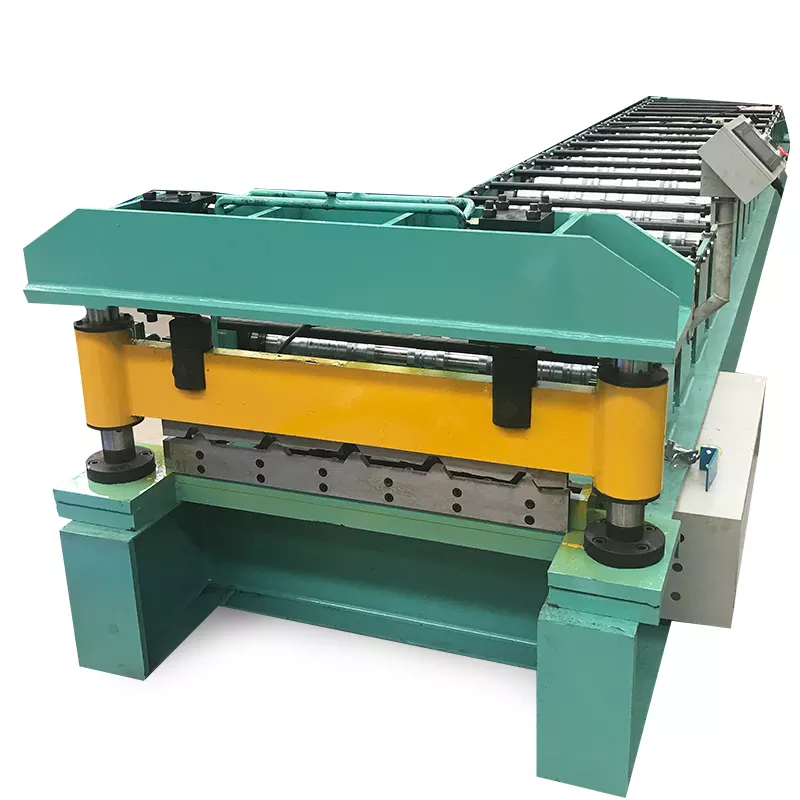

different material of Metal Roofing Roll Forming Machines for sale
The most common material of metal roofing is steel. Steel roofs are durable and long lasting, making them a popular choice for both commercial and residential buildings. There are two types of steel roofing: corrugated and standing seam. Corrugated steel roofs are made up of panels that have been formed into wave-like patterns, while standing seam roofs have seams that run vertically along the length of the panel.
Aluminum is another material of metal roofing that is becoming increasingly popular. Aluminum roofs are lightweight and reflective, which helps keep your home cooler in the summer months. They are also fire resistant and easy to recycle.
Copper is another option for metal roofing. Copper roofs have a long lifespan and are very energy efficient. They are also low maintenance and considered to be environmentally friendly.
-
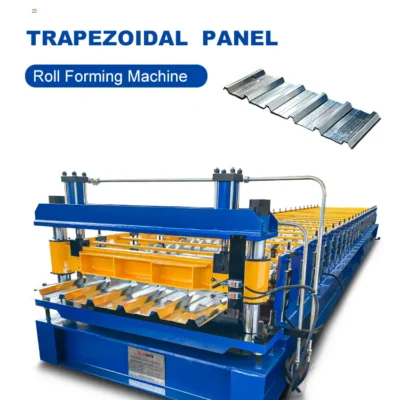 Trapezoidal Panel Roll Forming Machine
Trapezoidal Panel Roll Forming Machine -
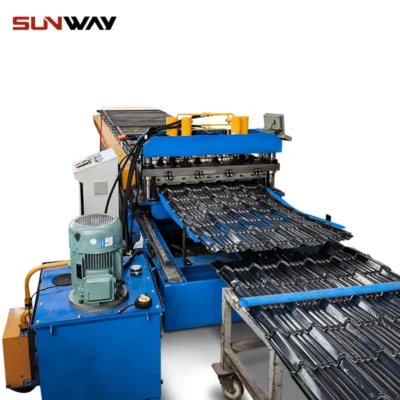 Roof Tile Panel Roll Forming Machine
Roof Tile Panel Roll Forming Machine -
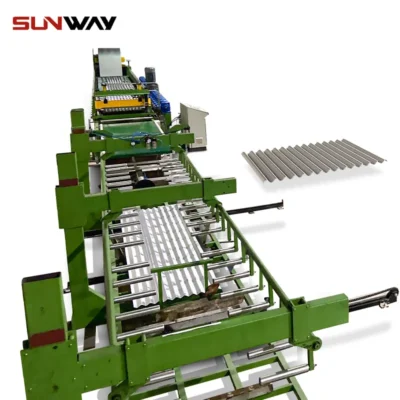 Corrugated Panel Roll Forming Machine
Corrugated Panel Roll Forming Machine -
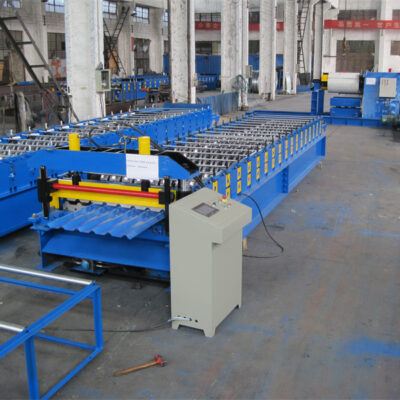 Trapezoidal panel roll forming machine
Trapezoidal panel roll forming machine -
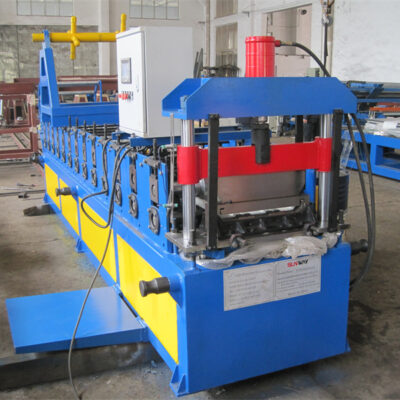 Standing Seam Roof Panel Forming Machine
Standing Seam Roof Panel Forming Machine -
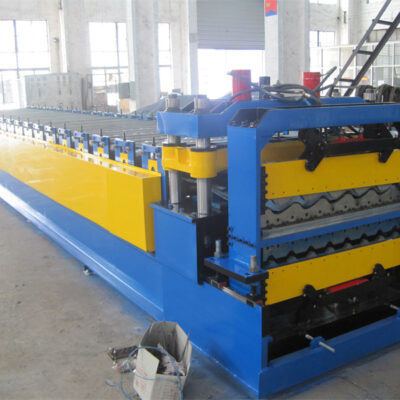 Roof Panel Double Layer Machine丨Tile &
Roof Panel Double Layer Machine丨Tile & -
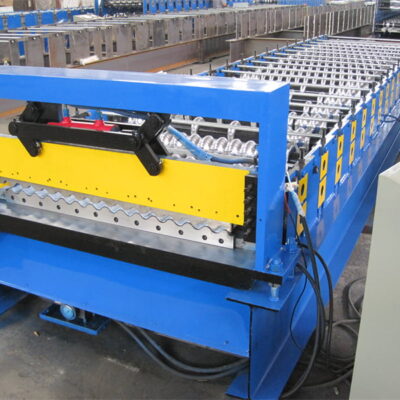 Roof Tile Roll Forming Machine
Roof Tile Roll Forming Machine -
 Corrugated Roll Forming Machine
Corrugated Roll Forming Machine -
 Bemo Roof Panel Roll Forming Machine
Bemo Roof Panel Roll Forming Machine
Benefits and Concerns About Using Metal Roofing Roll Forming Machines for sale
There are a lot of benefits that you can get from using metal roofing roll forming machines for sale. For one, it can help you save time and money. With this machine, you will be able to create your own metal sheets in just a matter of minutes. This is very convenient especially if you are working on a tight budget.
Another good thing about using these machines is that they are very easy to operate. You don’t need to have any special skills or knowledge in order to use them. Even if you are a beginner, you can still easily figure out how to use them.
Lastly, metal roofing roll forming machines for sale are very versatile. You can use them for a variety of purposes such as creating roofs for sheds, garages, and even homes.
How to Find the Right Type of Metal Roofing Roll Forming Machine For Your Business?
If you are in the market for metal roofing roll forming machines for sale, there are a few things you will want to keep in mind in order to get the right one. Here are a few tips on how to choose a metal roofing roll forming machine:
- Determine the Type of Metal Roofing You Need
There are different types of metal roofing roll forming machines for sale, so you will want to make sure you get a machine that is designed for the type of roofing you need. For example, there are machines for standing seam metal roofs and machines for corrugated metal roofs.
- Consider the Size and Weight of the Machine
The size and weight of the machine is important because you need to make sure it will fit in the space you have available and that it can handle the weight of the metal sheets.
- Determine Your Budget
Metal roofing roll forming machines for sale can vary widely in price, so it is important to determine your budget before shopping. This will help you narrow down your options and find a machine that fits both your needs and your budget.

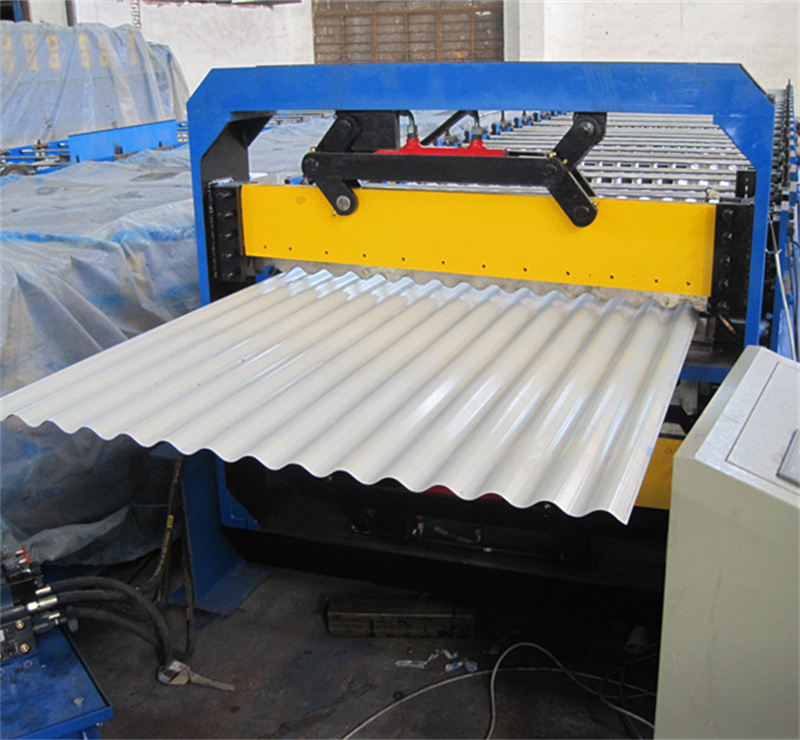
Uses of a Roll Forming Machine
A roll forming machine is a versatile piece of equipment that can be used for a variety of applications. Here are some of the most common uses for a roll forming machine:
- Roofing: Metal roofing panels are often produced using a roll forming machine. The panels can be made from a variety of materials, including aluminum, steel, and copper.
- Siding: Metal siding panels can also be produced using a roll forming machine. These panels can be made from materials such as aluminum, steel, and copper.
- Gutters: Roll forming machines can be used to produce gutters and downspouts. These products can be made from materials such as aluminum, steel, and copper.
- Trim: A roll forming machine can also be used to produce trim pieces for buildings. These trim pieces can be made from materials such as aluminum, steel, and copper.
Conclusion
In conclusion, there are a few factors that you need to consider when purchasing metal roofing roll forming machines for sale. By taking the time to do your research and understand your needs, you will be able to find the perfect machine for your business. With the right machine, you will be able to increase productivity and efficiency in your business while also saving money in the long run. Do not hesitate to contact us if you have any further questions about choosing the right metal roofing roll forming machine for your business. We would be more than happy to assist you in finding the perfect solution for your needs.
Frequently Asked Questions (FAQ)
1) What specs matter most when comparing Metal Roofing Roll Forming Machines for sale?
- Prioritize coil width/thickness range, line speed (m/min), number of forming stations, cut-length tolerance, drive type (gearbox vs. chain), and changeover method (cassette vs. manual).
2) Can one machine produce corrugated and standing seam panels?
- Yes, if the base frame supports modular tooling and adequate motor torque. Quick-change cassettes or separate cassette sets enable switching between trapezoidal, corrugated, and some standing seam profiles.
3) What affects cut-length accuracy on pre-painted coils?
- Encoder slip and acceleration profiles. Dual or laser encoders, non-slip drive rolls, and servo flying-shear units maintain ±0.5–1.0 mm accuracy on 6 m panels.
4) How do I estimate total cost of ownership (TCO)?
- Include purchase price, shipping, import duties, installation, training, tooling sets, spare parts, energy use (kWh/ton), lubricants, and planned maintenance. A CMMS and preventive maintenance can reduce unplanned downtime by 20–40%.
5) What safety features should be non-negotiable?
- E-stops, interlocked guards, light curtains at shear/stacker, two-hand jog, lockout/tagout points, and compliance with ISO 12100/CE. Provide operator PPE and documented training.
2025 Industry Trends
- Faster profile changeovers: Cassette tooling and auto stand positioning cut changeovers to 25–45 minutes.
- AI-driven quality control: Vision systems detect coating scratches, edge wave, and oil-canning; automatic roll-gap micro-adjustments reduce scrap.
- Energy-efficient drives: IE5 motors and regenerative VFDs lower energy intensity; plants track kWh/ton alongside OEE.
- Thin-gauge, high-strength steels: Zn-Al-Mg coated and cool-roof finishes require gentler handling, precise guiding, and optimized roll flowers.
- Digital traceability: MES links coil heat numbers to batches and QC results; barcoded panel stacks simplify warranty management.
2025 benchmarks for Metal Roofing Roll Forming Machines
| Metric | 2022 Typical | 2025 Best-in-class | Impact | Sources/Notes |
|---|---|---|---|---|
| Line speed (m/min) | 10–35 | 30–60 (roofing); up to 75 for simple profiles | Throughput | OEM datasheets; The Fabricator (roll forming) |
| Cut-length tolerance (6 m) | ±1.0–2.0 mm | ±0.5–0.8 mm | Installation fit | Dual/laser encoders; ISO 9001 QMS |
| Changeover time | 90–180 min | 25–45 min | Flexibility | SMED; NIST MEP: https://www.nist.gov/mep |
| OEE | 55–65% | 75–85% | Availability/quality | CMMS + inline vision |
| Energy intensity | 150–190 kWh/ton | 110–130 kWh/ton | Cost & ESG | ISO 50001: https://www.iso.org |
| Coating defect rate | 1.5–3.0% | 0.5–1.0% | Scrap reduction | Cognex/Keyence AI vision |
Additional references:
- ISO standards (12100 safety, 9001 quality, 50001 energy): https://www.iso.org
- ASTM A653 / EN 10346 for coated steel sheets: https://www.astm.org, https://standards.iteh.ai
- The Fabricator (technical articles on roll forming): https://www.thefabricator.com
Latest Research Cases
Case Study 1: AI Vision Cuts Scrap on Pre-Painted Roof Panels (2025)
Background: A regional manufacturer producing trapezoidal and corrugated panels at 28 m/min faced 2.8% scrap from coating scratches and edge wave.
Solution: Deployed inline AI vision, low-friction entry guides, torque-based roll-gap presets per recipe, and dual encoders for non-slip cut-length.
Results: Scrap reduced to 0.9%; FPY increased from 94.2% to 98.4%; average line speed raised to 35 m/min; cut-length Cpk improved from 1.2 to 1.7.
Case Study 2: Cassette Tooling for Mixed Profile Demand (2024)
Background: Frequent switches between corrugated and standing seam profiles caused 2–3 hour changeovers and missed delivery targets.
Solution: Implemented cassette roll tooling, color-coded setup gauges, and automated stand positioning with stored digital recipes.
Results: Changeover time averaged 41 minutes; OEE rose from 60% to 76%; on-time delivery improved by 12%; operator training time reduced by 30%.
Expert Opinions
- Dr. Daniel Schaeffler, President, Engineering Quality Solutions
Viewpoint: “Consistent coil flatness and mechanical properties dictate panel quality. If the entry guides fight coil set, camber and oil-canning will follow you downstream.” - Michael Gill, Director of Engineering, Bradbury Group
Viewpoint: “For metal roofing roll forming lines, cassette tooling and servo flying shears offer the best ROI when profile variety is high—pair them with dual encoders to protect cut accuracy on coated coils.” - Sarah Clark, Technical Director, Metal Construction Association
Viewpoint: “Traceable quality—from coil heat to pallet—is becoming standard in roofing bids. Linking maintenance and QC data to each batch reduces warranty exposure.”
Practical Tools/Resources
- Roll design/simulation: COPRA RF / FEA RF (https://www.data-m.de), UBECO PROFIL (https://www.ubeco.com)
- Inline inspection: Cognex Vision (https://www.cognex.com), Keyence laser displacement/vision (https://www.keyence.com)
- Maintenance & operations: Fiix CMMS (https://www.fiixsoftware.com), UpKeep (https://www.upkeep.com), IBM Maximo (https://www.ibm.com/products/maximo)
- Standards and materials: ISO 12100/9001/50001 (https://www.iso.org); ASTM A653 / EN 10346 (https://www.astm.org, https://standards.iteh.ai)
- Industrial connectivity/MES: OPC Foundation (OPC UA) (https://opcfoundation.org); Inductive Automation Ignition (https://inductiveautomation.com)
Last updated: 2025-10-20
Changelog: Added 5 targeted FAQs; introduced 2025 benchmarks table and trends for Metal Roofing Roll Forming Machines; included two recent case studies; provided expert viewpoints and curated tools/resources with authoritative links
Next review date & triggers: 2026-04-15 or earlier if ISO/ASTM/EN standards change, major OEMs release sub-45 min cassette changeover packages, or AI vision solutions add closed-loop roll-gap control integrations
